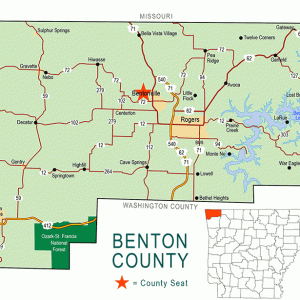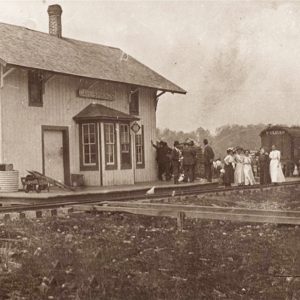calsfoundation@cals.org
Cave Springs (Benton County)
| Latitude and Longitude: | 36º15’48″N 094º13’55″W |
| Elevation: | 1,155 feet |
| Area: | 7.84 square miles (2020 Census) |
| Population: | 5,495 (2020 Census) |
| Incorporation Date: | March 15, 1910 |
Historical Population as per the U.S. Census:
|
1810 |
1820 |
1830 |
1840 |
1850 |
1860 |
1870 |
1880 |
1890 |
1900 |
|
– |
– |
– |
– |
– |
– |
– |
– |
– |
– |
|
1910 |
1920 |
1930 |
1940 |
1950 |
1960 |
1970 |
1980 |
1990 |
2000 |
|
– |
– |
192 |
285 |
267 |
281 |
469 |
429 |
465 |
1,103 |
|
2010 |
2020 |
|
|
|
|
|
|
|
|
|
1,729 |
5,495 |
|
|
|
|
|
|
|
|
The city of Cave Springs, nestled in the hills of northwest Arkansas, Benton County, is known more for recreational opportunities than for its role in industry or agriculture. Incorporated in 1910, the second-class city stands on Highways 112 and 264 and is often the first community seen by visitors to Arkansas who arrive at the Northwest Arkansas National Airport.
Cave Springs is named for two caves and for the water source that flows from the northernmost of those caves. The north cave, which has been closed to the public since the 1980s, is said to consist of several rooms and to contain two beautiful waterfalls. It is home to many bats and to the largest known population of the rare and threatened Ozark cavefish. The spring emits six million gallons of water per day, which flows from the cave year-round at a constant temperature of fifty-four degrees.
American settlers began to populate the area after Arkansas became a state in 1836. George Robbins built a gristmill around that time and sold it to Elijah Allen in 1852. John Sandusky opened a general store, and James Dickson built a second gristmill north of the incipient settlement, which he later sold to a Mr. Finncannon. His mill is said to be one of the few in the area that operated continuously throughout the Civil War. After the war, in 1888, Finncannon arranged for a post office to be located at his property, naming the settlement Cannon for himself. The post office operated until 1906, when it was closed. The primary crop raised around Cannon in the late nineteenth century was tobacco.
The region remained sparsely settled until 1906, when the Kansas City and Memphis Railroad built a line through the area. A new post office, called Cave Springs, was established in 1908, the same year that the Cave Springs Bank was founded. A hotel, a barbershop, a blacksmith shop, and several stores quickly followed. The city was incorporated in 1910. The Shores Warehouse, now on the National Register of Historic Places, was built in 1911. A sorghum mill was built in 1920 and operated until the Great Depression. Apples were a major crop in the area during the first third of the twentieth century, but the apple industry also failed during the Depression. Following the Depression and World War II, poultry and livestock replaced apples as the principal agriculture of the area.
A dam, first built by Allen to operate his gristmill, created a body of water first known as Loch Lono. W. M. Bartlett acquired the property around the time Cave Springs was incorporated and replaced the earthen dam with a concrete structure, also installing dressing rooms for swimmers. In 1947, E. L. Keith purchased the property and made further improvements to the dam and lake, including a skating rink, a restaurant, and a trout hatchery. At this time, the lake was renamed for him, and it is still called Lake Keith. During the 1950s, the city laid pipes from the cave to provide water to its residents.
Cave Springs is home to four churches. Cave Springs First Baptist Church was established in 1880. Apostolic Faith Mission Church opened its doors in 1912. Lakeview Baptist Church began in 1951 as a mission of First Baptist Church in Bentonville (Benton County). Cave Springs Church of Christ is the youngest of the four congregations in the city.
The first school built in the Cave Springs area was a one-room log house called “Stick in the Mud” because of its materials. This early school was replaced by Cave Springs School District, established in 1879. This was joined in 1884 by Evening Star School between Cave Springs and Bentonville. Both school districts were consolidated into the Bentonville School District in 1948.
In 1951, the movie Wonder Valley was filmed in and near Cave Springs. Several area farms and buildings were used in the filming, and local children and adults appeared in the movie as extras. A television miniseries about the Civil War, The Blue and the Gray, also had several scenes filmed in the Cave Springs area in 1981. The Arkansas Natural Heritage Commission bought nearly sixty acres, including the caves, in 1985 to protect the cavefish and the gray bats living there, as well as rare plants, including Ozark trillium. Northwest Arkansas Regional Airport opened on November 1, 1998, bringing many more people through the area. Notable sites in the city today include Nelson’s Hardware and Supplies, Showcase Sheds and Creative Design Workshop, and The Creeks Golf & RV Resort. Each September, the city celebrates Cave Springs Days, which draws up to 5,000 visitors to the city.
For additional information:
Benton County Heritage Committee. History of Benton County, Arkansas. Rogers, AR: Benton County Heritage Committee, 1991.
Black, J. Dickson. History of Benton County, 1836–1936. Little Rock, AR: 1975.
Cox, Sandra. “Small Town, Big Appeal.” Arkansas Democrat-Gazette, November 16, 2010, pp. 1E, 6E.
Steven Teske
CALS Encyclopedia of Arkansas
 Benton County Map
Benton County Map  Cave Springs Depot
Cave Springs Depot 




Comments
No comments on this entry yet.